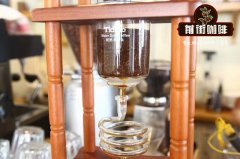What is F1 mixed coffee what are the advantages of F1 mixed coffee

Professional coffee knowledge exchange more coffee bean information please follow the coffee workshop (Wechat official account cafe_style)
Mixed coffee has the opportunity to get higher scores on the cup test, and has better disease resistance and better yield in planting. But what kind of coffee are they? Why do we have to pay attention to it? Is it possible for hybrids to replace existing single varieties such as bourbon or Tibica?
Take a quick look at coffee varieties
Before we look at the mix, let's take a quick look at the varieties of coffee. There are about 100 known varieties of coffee, but the general classification of coffee shops will only see Arabica, Robusta, or a mixture of two kinds of coffee.
Arabica is the most commonly used variety, known for its high-quality flavor and aroma, but at the same time Arabica coffee trees are also poor in resistance to diseases and insect pests. Robusta, on the other hand, is more resistant to disease and insect pests and has higher levels of caffeine, but it is usually more bitter than Arabica (although some so-called boutique robusta coffee is still in circulation in the boutique coffee world).
At present, only Arabica dominates the boutique coffee factory, and this variety will be subdivided into many varieties, each with different flavor characteristics, disease resistance, yield and suitable growth environment.
Variety and Diversity of Coffee
Arabica coffee lacks diversity, which is a problem.
Different varieties of species should increase genetic diversity. Yet it actually has a worrying 98.8% genetic similarity. To illustrate this point, compared with crops such as rice and soybeans, the similarity is only 70-80%, which makes Arabica more vulnerable.
If leaf rust affects a particular variety, it is likely to affect other similar varieties. Therefore, many varieties that prevent coffee leaf rust are an extension of Katimo. These are a mixture of Arabica varieties Kaddura and Timor, which itself is a mixture of Arabica and Robusta. Robusta increased disease resistance and diversity. However, it also means that boutique coffee buyers may be hesitant about the quality of these varieties.
Coupled with the impact of global climate change, if there is no practical action to solve this problem, the Arabica species will gradually disappear.
Important Notice :
前街咖啡 FrontStreet Coffee has moved to new addredd:
FrontStreet Coffee Address: 315,Donghua East Road,GuangZhou
Tel:020 38364473
- Prev

Coffee leaf rust what is coffee leaf rust? coffee tree diseases and insect pests
Professional coffee knowledge exchange more coffee bean information Please pay attention to the coffee workshop (Wechat official account cafe_style) High temperature and humidity is the season when a large number of spores of coffee leaf rust germinate and spread. Please take measures to prevent and control coffee leaf rust as soon as possible. Coffee leaf rust is a worldwide coffee disease, which occurs more in low cold mountain areas than in flat areas. The loss of coffee is quite serious.
- Next

The three primary species of coffee. What are the original species of coffee beans?
Professional coffee knowledge exchange more coffee bean information Please follow the coffee workshop (Wechat official account cafe_style) when we talk about Ethiopian coffee, some people will use the words jasmine, rose fruit, magnolia and other words to describe the smell of flowers, but have you ever wondered why these specific varieties with floral flavor are often summed up as "native species"? In the third Boca
Related
- Beginners will see the "Coffee pull flower" guide!
- What is the difference between ice blog purified milk and ordinary milk coffee?
- Why is the Philippines the largest producer of crops in Liberia?
- For coffee extraction, should the fine powder be retained?
- How does extracted espresso fill pressed powder? How much strength does it take to press the powder?
- How to make jasmine cold extract coffee? Is the jasmine + latte good?
- Will this little toy really make the coffee taste better? How does Lily Drip affect coffee extraction?
- Will the action of slapping the filter cup also affect coffee extraction?
- What's the difference between powder-to-water ratio and powder-to-liquid ratio?
- What is the Ethiopian local species? What does it have to do with Heirloom native species?

